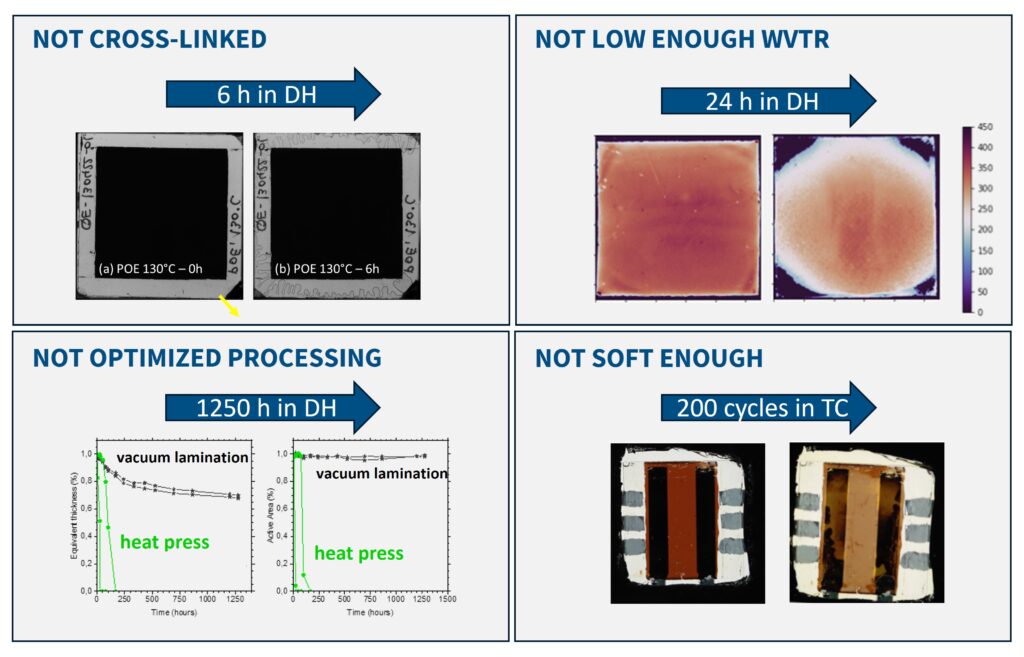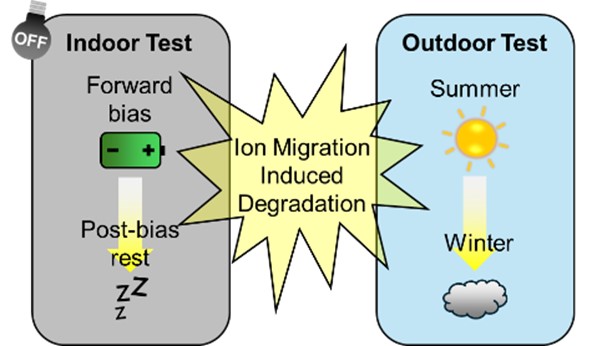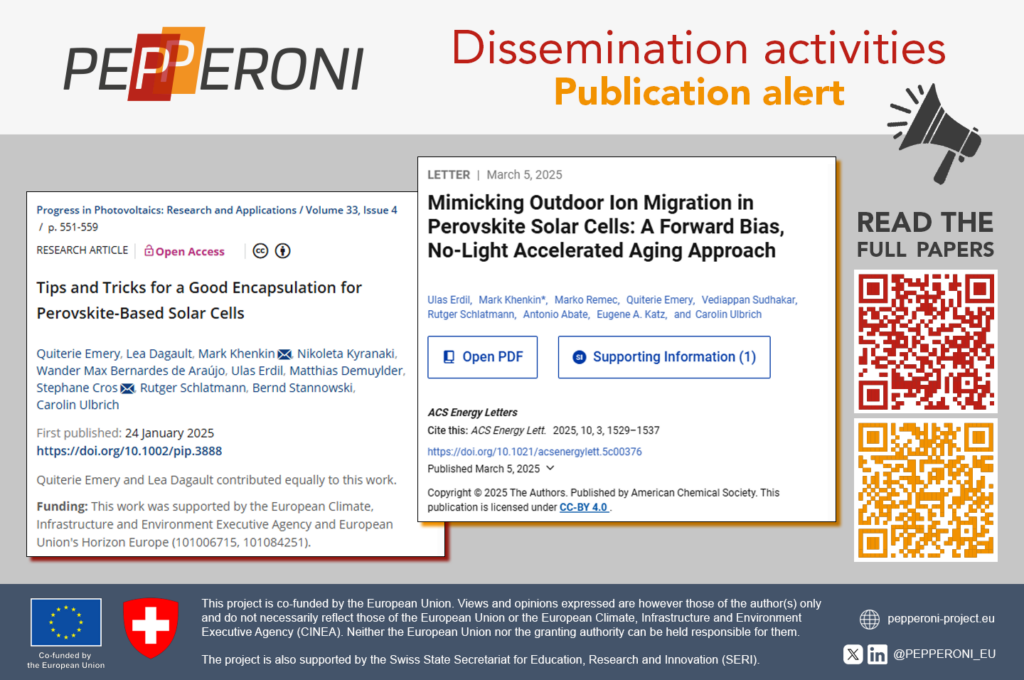The potential of perovskite’s higher efficiencies passing the limits of silicon could dethrone the established silicon solar technology. Since perovskite/silicon tandem solar cells reach higher efficiencies but face stability issues, encapsulation research is an important area for ensuring their practical and commercial success. Encapsulation in solar cells refers to the process of protecting the active layers from environmental factors such as moisture, oxygen, heat, and mechanical stress. The wide implementation of perovskite-based solar cells (PSCs) and modules depends thus in part on their encapsulation technologies and operational stability. The Helmholtz-Zentrum Berlin (HZB), PEPPERONI project partner and coordinator, recently published two papers about the latest test results with different materials and procedures aimed at achieving the full performance potential of perovskite photovoltaic (PV) modules.
The first publication, titled “Tips and Tricks for a Good Encapsulation for Perovskite-Based Solar Cells” and published on 24 January in the Wiley Online Library, discusses the ability of different materials compatible with conventional PV manufacturing processes to prevent moisture ingress, withstand elevated temperatures, and avoid thermomechanical issues. Configurations with polyolefin and butyl edge sealant, needed for protection from moisture, showed the most promising after they passed the damp heat test and revealed fewer issues in thermal cycling experiments. Generally, it was concluded that choosing an optimal encapsulation scheme for perovskite devices requires a holistic approach. Read the full paper here.


In the second publication, titled “Mimicking Outdoor Ion Migration in Perovskite Solar Cells: A Forward Bias, No-Light Accelerated Aging Approach” and published on 5 March in ASC Publications, accelerated indoor ageing with prolonged forward bias followed by a post-bias rest phase is described as exhibiting dynamics similar to a 20-month outdoor operation. This new method can replace illumination as the primary stressor in tests trying to mimic ion migration-induced degradation. Read the full paper here.



